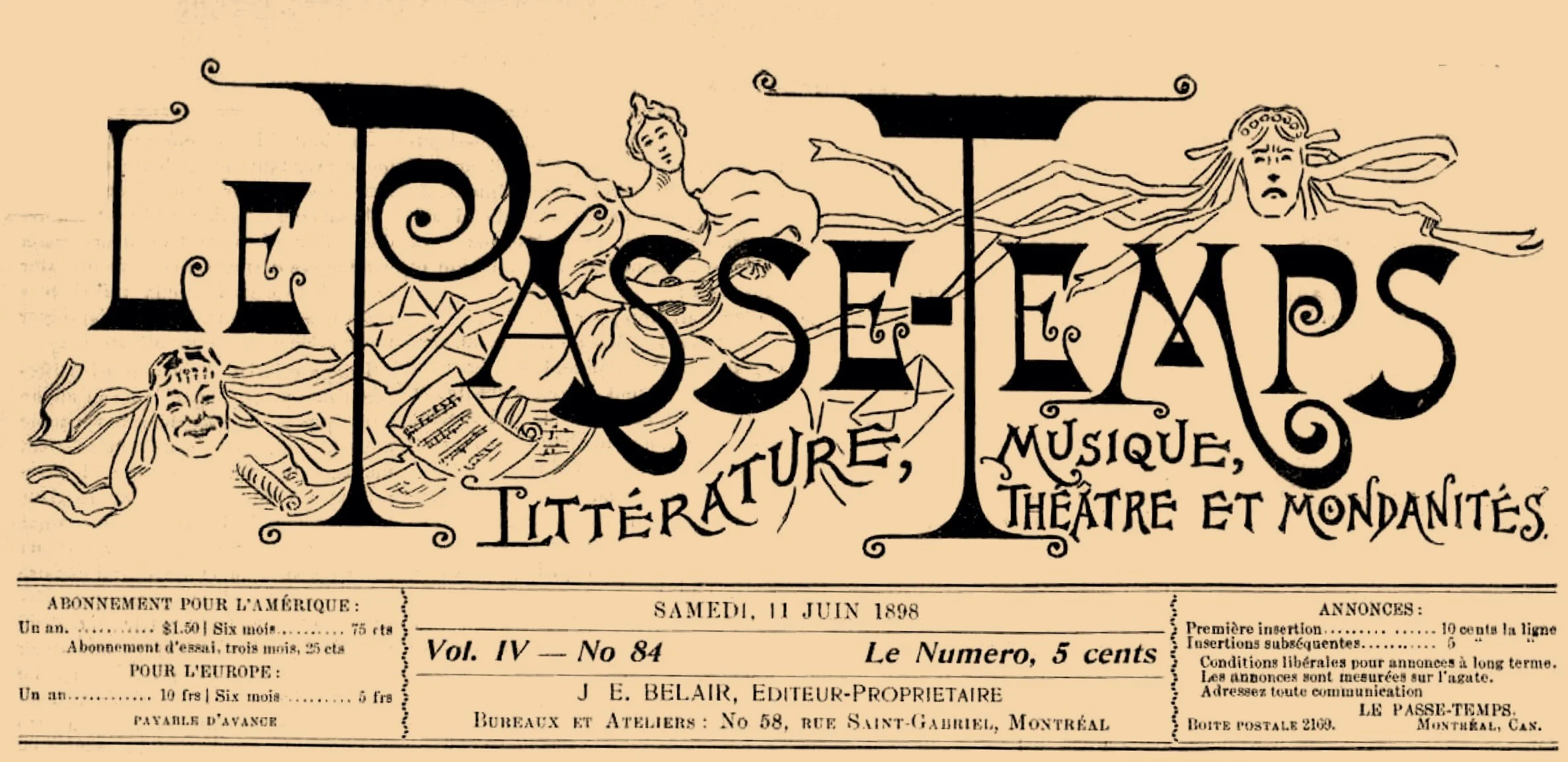Orchestra Estudiantina by Camillo d'Alessio. Le Passe-Temps, 1906, BAnQ Collections.
Le Passe-Temps: A Music Periodical Pioneer in Canada
Joseph Émile Bélair, born in St-Paul de Joliette in 1866, was a musician, typographer and founder of the newspaper Le Passe-Temps. This Montreal periodical, published between 1895 and 1949, was devoted to music, literature and theater. The newspaper offers, in a musical section, scores of Canadian and foreign works and presents numerous articles describing the cultural and artistic life of French-Canadians which it promotes. Many of these pieces are intended for mandolin lovers and are within their reach.
“In the newspaper “Le Monde” in 1892. The typographer-musician. Discovery of an economical process of musical engraving. The Passe-Temps, its foundation in 1895. Ideal of artist. Laborious life devoted entirely to the publication of Le Passe-Temps.”
The Mandolino, Giornale de Musica Quindicinale 1933
Musical typography in full expansion
The first musical periodical dedicated to the mandolin was born on November 15, 1892 in Turin, Italy. The journal “Il Mandolino” immediately establishes a correspondence in all the important cities of the world. Several other magazines begin their publication and fulfill two objectives: to provide original music and to inform the followers of the events.
“I forgot to tell you that Bélair had been doing musical typography for several years and that he had ingeniously discovered... at least I think so... an engraving process that had the double merit of being cheap and fast.”
Birth of Le Passe-temps in 1895
Curious enough to be mentioned, J.E. Bélair, then a typographer at the Montreal newspaper Le Monde, was credited in 1892 with the "invention" of a fast and cheap music writing system... A little more than two years passed and the inventor-typographer was ready to launch his first music publication in 1895.
Between the year of its foundation and its end in 1949, Le Passe-Temps prints 923 issues, publishing chronicles on artists, theater, fashion, classical and popular music of the time, musical compositions of artists of the French-Canadian musical movement as well as numerous compositions for mandolin and guitar from the Italian magazine "Il Mandolino".
Gigue pour Mandoline by Paul Lamoureux (1870-1945) Le Passe-Temps, 1912, BAnQ Collections.
“A young man told us yesterday: “I subscribed to Passe-Temps and I send it to my girlfriend in the country as soon as I read it. She is delighted with the music.” Whether your sweetheart is blond, brunette or redhead, send her Le Passe-Temps, you will please her by reading or playing the music it contains, she will dream of you.”
Websites
J.E. Bélair (1895-), Le Passe-Temps
https://collections.banq.qc.ca/ark:/52327/2272562
www.thecanadianencyclopedia.ca
Readings
SPARKS, P. (1995) The Classical Mandolin, BÉLANGER, R. (1986) Wilfrid Laurier, quand la politique devient passion, SAINT-JACQUES D. et DES RIVIÈRES M.J. (2015) De la belle époque à la crise, BORDES E. (1980) Le Mémorial du Québec, le Québec 1839-1889, AMTMANN, W. (1976) La musique au Québec 1600 - 1875, LINTEAU, P.-A. (1997). Quelle Belle Époque? Cap-aux-Diamants, COTÉ, C. (1990). Les racines de la musique populaire québécoise.


